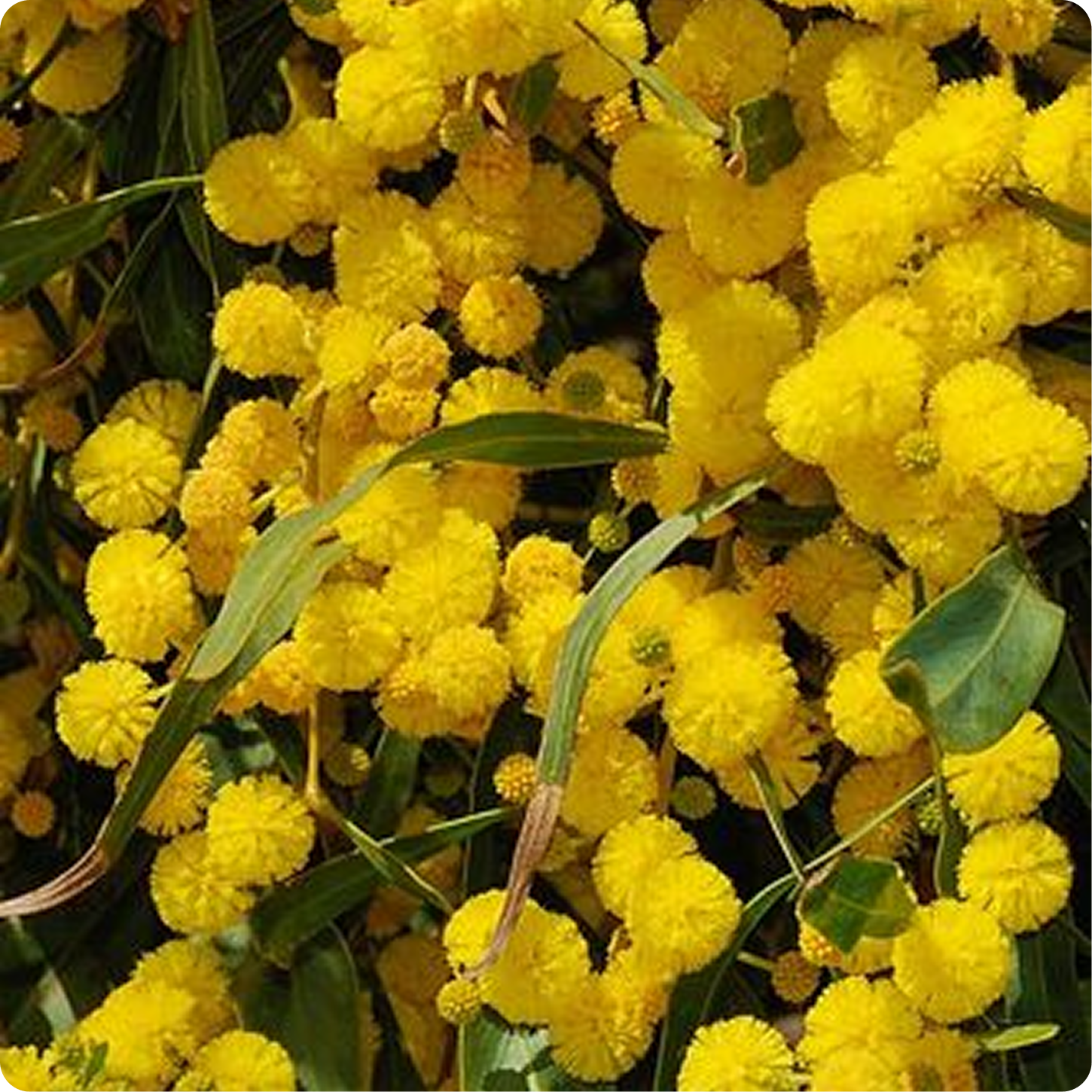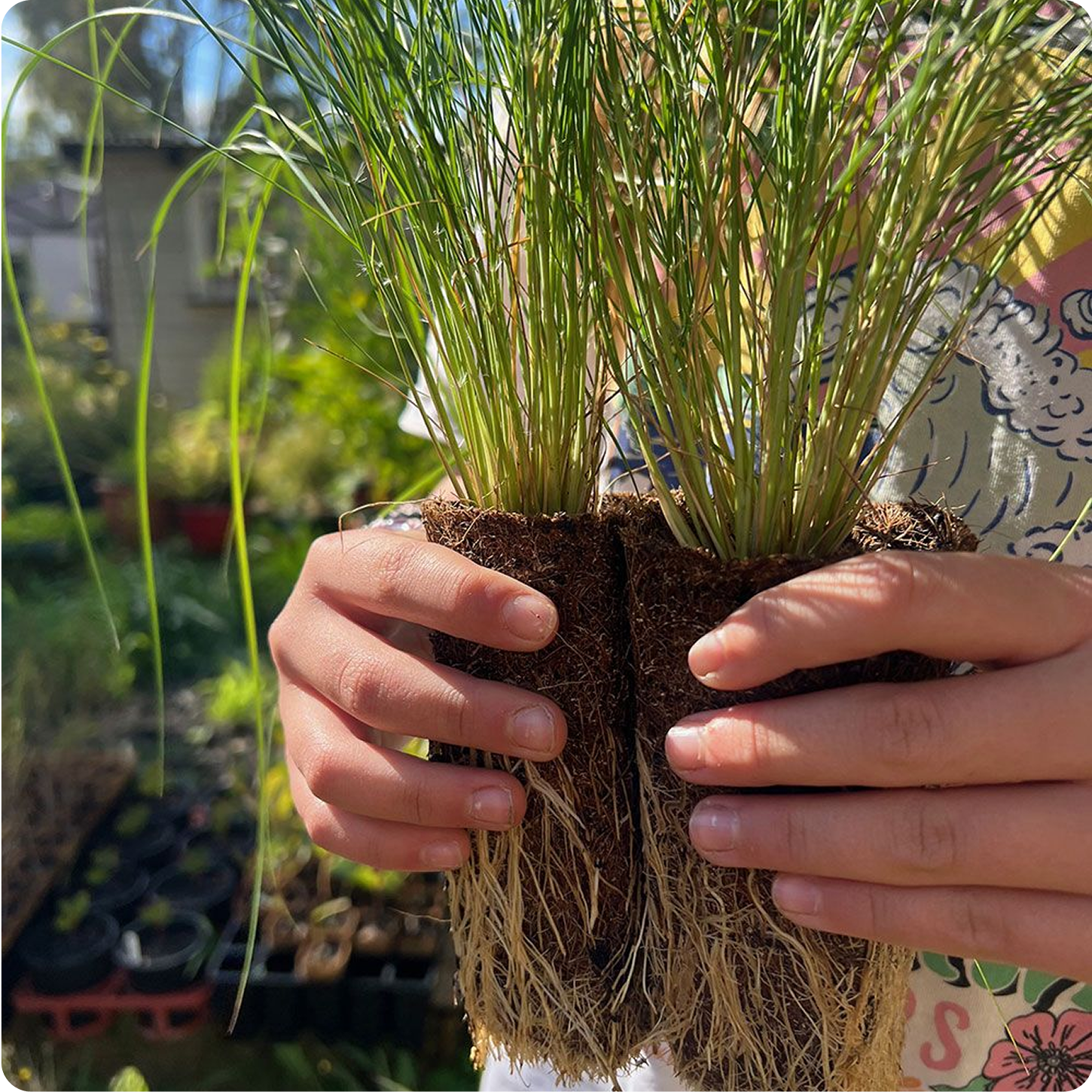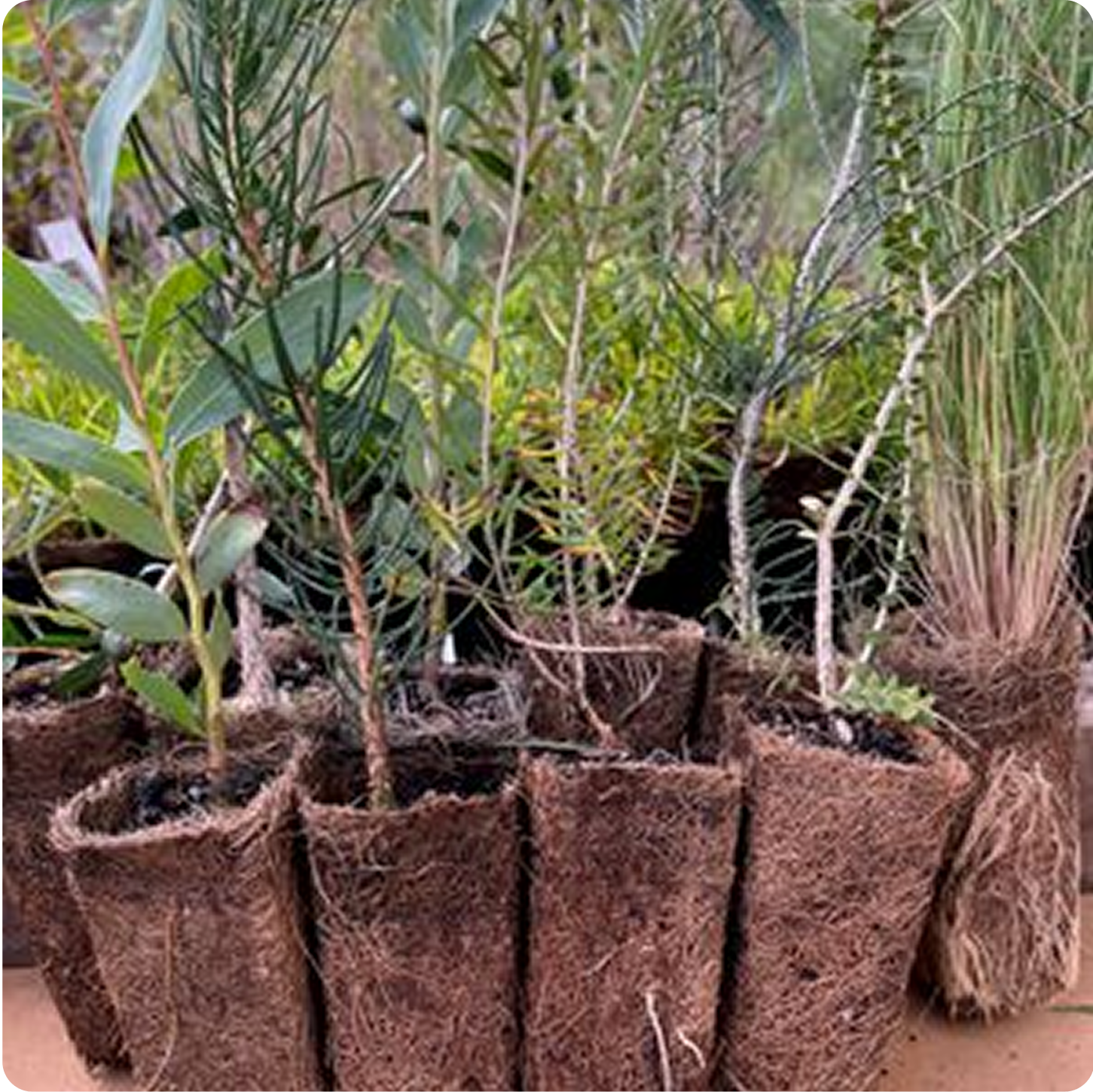Quick Growing Natives
Short on patience? We get it. These WA natives are known for their get-up-and-grow attitude. Perfect if you want cover, colour, or height in a hurry.
Sort by:
8 products
8 products
Creeping Saltbush (Atriplex semibaccata), a robust plant that excels in stabilising soil and suppressing weeds. A low-growing, spreading ground cover reaching 1 metre across.
A dense low shrub with green/grey foliage and small, succulent red berries, which are diamond shaped, are food for birds. Atriplex semibaccata provides shelter and habitat for insects and lizards, grows in many soil types in full or part sun.
Enchylaena tomentosa, also known as barrier saltbush, is a hardy, low maintence native shrub perfect for tough conditions, thriving in many soil types, coastal areas and dry landscapes. Growing to 0.5-1m, barrier saltbush is resilient and adds great habitat value to your garden.
It's soft green foliage is complemented by vibrant red and golden berries which attract birds and wildlife to your space. Barrier saltbush is ideal for groundcover, erosion control and habitat.
Acacia brumalis is a hardy, attractive acacia growing up to 3 metres. It produces dense foliage that offers shelter for birds and small wildlife, while providing masses of yellow flowers in winter and spring for bees and butterflies. Well-suited to many soil types, thrives in full sun and is drought tolerant once established.
A low maintenance, small bushy shrub perfect for native gardens, wind breaks and habitat.
River Saltbush (Atriplex amnicola) thrives in harsh environments, with spear-shaped leaves and high tolerance for salinity and waterlogging, ideal for landscapes facing tough conditions. Grows to 1.5 metres.
Commonly mixed with other saltbush types to promote biodiversity and support ecological restoration, proving invaluable for both agriculture and conservation efforts.
Beyond its beauty, the Tall Saltbush offers a feast for honeyeaters with its red berries.
Perfect for under-canopy growth, the Tall Saltbush shows remarkable adaptability. It flourishes beneath taller trees. This low-maintenance shrub is well-suited to erosion control, habitat restoration, low-water landscaping while supporting local wildlife.
Acacia hemiteles, commonly know as the Tan wattle is a 2 metre tall multi-branched shrub with lovely long green grey leaves. With lots of brown flower buds in late winter which open into yellow balls, followed by curly seed pods. The local birds and insects love this shrub! Fast growing and perfect for diversity on your property.
Orange wattle, known as Acacia saligna, with its striking golden-yellow blooms, embodies the essence of the WA landscape. Renowned for quick growth and ability to thrive in many soil types. This versatile plant excels in various roles—beautifying gardens, nitrogen fixing, and supporting local birds and animals. Its drought resistance and minimal care requirements make it a favourite among gardeners.
In gardens, Orange Wattle becomes a hub of activity, attracting pollinators like bees and butterflies, thus promoting biodiversity. This plant not only enhances garden visuals but also contributes significantly to ecological balance, making it an invaluable addition to any outdoor space.
It grows as a small, dense tree with a short trunk and weeping habit, eventually growing up to 8m. Large amounts of yellow flowers appear late winter.
Acacia meisneri, commonly known as the Blue Wattle. This eye-catching plant features vibrant yellow flowers and distinctive bluish-green foliage. Blooming in late winter to early spring, it's timed perfectly to attract pollinators and brighten your garden.
The Blue Wattle thrives in a variety of soil types, from sandy to loamy. It adapts easily, fast growing either as a small, charming tree or a dense, multi-stemmed shrub.
Acacia meisneri improves environmental health and beautifies spaces. It fixes nitrogen in the soil, its drought resistance also makes it suitable for landscaping, promoting a sustainable, water-efficient garden. Whether used as a natural screen or a decorative hedge, the Blue Wattle serves a dual purpose, enhancing both garden aesthetics and ecosystem health.




















